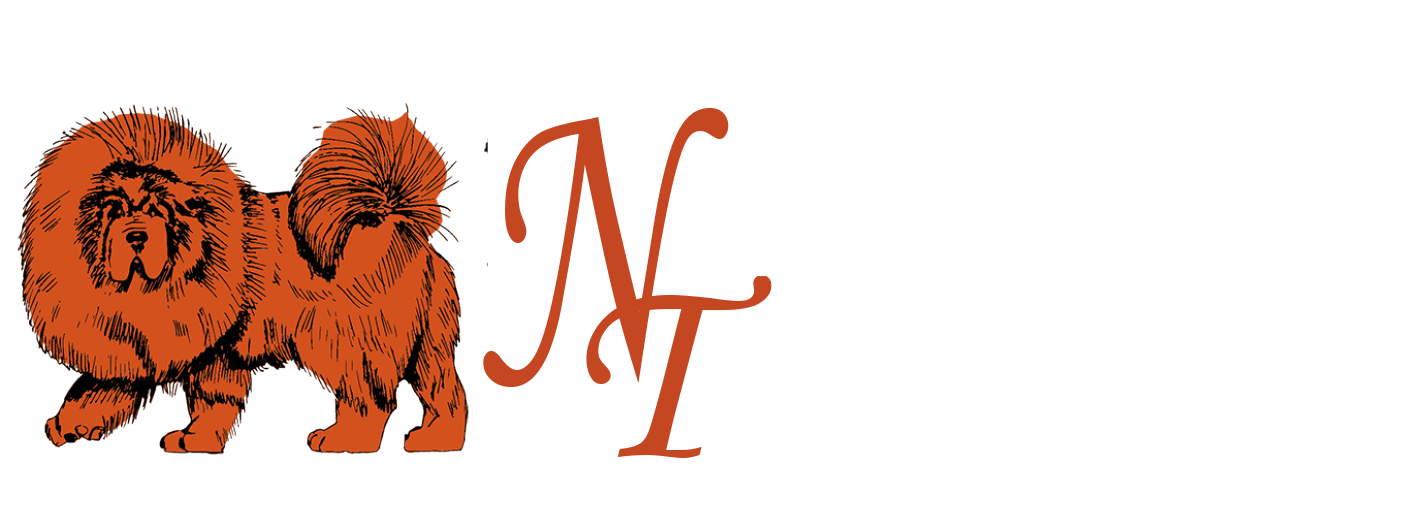Tibetan Mastiff Breed Standard
The breed is recognized by FCI, UKC, TKC, AKC
ORIGIN: Tibet
PATRONAGE: FCI
FUNCTIONAL PURPOSE: companion, guard and guard dog.
CLASSIFICATION OF G.CX: Group 2 Pinscher and Schnauzer –
Molosoid breeds are Swiss mountain and shepherd dogs and other breeds.
Section 2 2 Molosoid rocks, Mountain type.
Without checking the working qualities.
OVERALL IMPRESSION: A strong, heavy, strong-built dog with a good backbone. Impressive; looking solemn and serious. Combines majestic strength, health and endurance; suitable for work in any climatic conditions. Develops slowly: bitches reach full maturity in 2-3 years, and males at the age of not earlier than 4 years.
IMPORTANT PROPORTIONS: The distance from the back of the head to the foot is equal to the length of the muzzle from the foot to the tip of the nose, but the muzzle may be slightly shorter.
The body is slightly longer than the height at the withers.
BEHAVIOR/CHARACTER: Independent. Guard. Obedient to commands. He is especially devoted to his family and protects his territory.
HEAD: Broad, heavy and powerful. In adult animals, the fold may extend from the line above eye level to the corners of the mouth.
CRANIAL REGION: Skull: Large, very slightly rounded, with a pronounced occiput.
Stop: Clearly expressed
FACIAL PART: Nose: Wide, as dark as possible depending on color, open nostrils.
Muzzle: Fairly wide, well filled and deep. The end of the muzzle is square.
Lips: Well formed and covering the lower jaw.
Jaws/Teeth: The jaws are strong with a perfect correct bite, that is, the upper teeth tightly overlap the lower teeth, which creates a square jaw shape.
A direct bite is allowed. Teeth grow tightly.
Eyes: Medium size, any shade of brown depending on the coat color, the darker the better. Rather widely planted, oval-shaped, slightly slanted.
The eyelids fit tightly to the eyeballs. They have a proud expression.
Ears: Medium-sized, triangular, hanging, located between the upper line of the skull and the eye line, fall down and hang close to the head; when alarmed, they are in front. The skin on the ears is covered with soft, short hair.
NECK: Strong, muscular, curved. Not too big wings. It is covered with a thick, protruding mane, which is not so pronounced in bitches.
TORSO: Strong.
Back: Straight, muscular.
Croup: Broad, rather flat.
Chest: Rather deep, of medium width, with well-formed ribs that create a heart-shaped chest. The sternum reaches the knee joints.
tail: The average dinah. Set high on the same level with the back line, held high, bends freely on the back when the dog is alarmed or moving; densely covered with fur.
LIMBS:
FRONT CORNERS: Strong, well curved, densely covered with hair.
Shoulders: Well set, muscular.
Knee joints: Not turned either outwards or inwards.
Forearms: Straight, with well-formed bones.
Ankles (Headstock): strong, slightly sloping.
REAR CORNERS: Strong, muscular, well curved. Visible from behind, the hind legs are parallel.
Thighs: Rather long, strong, with good, strong muscles, but not convex.
Knee joints: Well curved.
Hock joint: Strong, low set.
A rudimentary finger is possible.
LEGS: Rather large, strong, round and compact, with fur between well-curved toes.
GAIT/MOVEMENT: Domineering, but always light and flexible: with a good step and energy. As the speed increases, it tends to move in a straight line. When walking, she looks very busy. It is able to function on any landscape, while demonstrating endurance.
wool:
QUALITY: Quality matters more than quantity. The coat is coarse, dense, the outer coat is not too long with a fairly large amount of undercoat in cold weather, which becomes rarer in the warm period of time. Males have significantly more hair than females. The coat is smooth, but rough, straight and sticking out. Under no circumstances should it be silky, curly or wavy. The neck and shoulders are densely covered with hair, which gives the impression of a mane. The tail is fluffy, well covered with fur. The hind legs are densely covered with fur on the rear upper part.
COLOR: Black with or without tan markings; gray with or without tan markings; golden from deep yellowish-brown to bright red. All colors should be as pure as possible. The scorch marks can range from chestnut to lighter colors. There may be small white markings on the paws. The scorch marks are located around the eyes, on the lower part of the paws and on the inside of the tail. Also, scorch marks are found on the muzzle; circular markings around the eyes are possible.
size:
Height at the withers:
Males : 66cm (26 inches) minimum
Females : 61cm (24 inches) minimum
disadvantages: The presence of any of the qualities listed below is considered a disadvantage and the severity of this disadvantage directly depends on the degree of its manifestation.
SERIOUS DRAWBACKS:
Lack of physical fitness and development
Light or severely broken wool
Pronounced keel
Large and/or low-set ears
Light eyes or frozen gaze
Poor pigmentation, especially of the nose
Edges (flat edges)
Strongly twisted tail on the back
The growth is below the minimum, it is permissible by 2 cm.
Heavy obstructed movements
Too sharp or right angles
disadvantages. LEADING TO DISQUALIFICATION:
Is the animal aggressive or too shy
Mouth (undershot or overshot)
Color of any other colors, except those listed above, approx.: white, cream, gray, brown (liver), purple, multicolor
Any dog with obvious physiological or behavioral abnormalities should be disqualified.
N.B. Males should have two normal, fully descended testicles.
